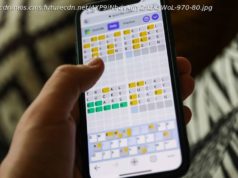Conviva’s Q2 2018 streaming TV census found viewing hours more than doubled since 2017 with significant jumps in simultaneous viewers, especially during the World Cup and the NBA playoffs. The survey also noted shifts in the devices used to stream TV and marked improvements in five video quality measures.
The total number of hours spent watching streaming TV continues to rise as more consumers cut the cord to cable and satellite television service. In the past 12 months streaming TV consumption more than doubled, according to Conviva.
The latest evidence that watching TV via the internet is growing comes from Conviva’s All-Screen Streaming TV Census Report Q2 2018. Conviva collects and analyzes data from sensors installed in 3 billion streaming video applications from more than 200 publishing brands.
Each quarter the Conviva census measures fully-anonymized data from every second of every stream in its system. Conviva compares the collected data to data from the same period in the previous year. The company’s latest census report covers April 1 through June 30,2018.
Three significant trends emerged from Conviva’s Q2 2018 census: streaming TV consumption more than doubled in the past year, viewing is shifting from computers to mobile and tablet devices, and streaming TV quality continues to improve.
Total streaming TV viewing hours more than doubled in Q2 2018 compared to 2017, with a 115 percent consumption increase.
Peak concurrent plays, the number of simultaneously streaming TV viewers watching the same content, increased 118 percent from 3.7 million viewers at one time in 2017 to 7.9 million in 2018.
The World Cup topped all other streamed content concurrent plays when 7.9 million people streamed a match at the same time. The NBA Western Conference Finals seventh game had 5.3 million concurrent plays.
Big gains in concurrent viewers put a strain on bandwidth, which underscores the need for continued improvement and viewership grows, Conviva reports.
Convivia tracks three classifications of streaming content viewing devices: mobile, which consists of smartphones and tablets; PCs (desktop computers); and internet-connected TVs. The Census tracks both the total number of plays and viewing duration.
Conviva’s Q2 2018 census reports a shift from PCs to mobile devices for viewing streaming content. In 2018 mobile devices were used for 49 percent of all plays, internet TVs for 27 percent, and PCs for 24%. Device usage changed significantly from 2017 when mobile devices were used for 39 percent of the plays, PCs for 38 percent, and internet TVs for 23 percent.
Conviva also noted that, as measured by total viewing hours, consumers preferred devices with larger screens, including TVs (51 percent) and PCs (20 percent) over than mobile devices (29 percent) when they watched movies and other longer content.
TV content publishers know cord-cutters quit cable and satellite TV to save money. The publishers also realize the same customers will exit quickly if streaming video quality sucks. Because positive streaming TV experiences will attract more customers and retain existing subscribers, publishers look for continuous video quality improvements.
Conviva tracks five quality of experience (QoE) factors, all of which improved significantly since Q2 2017.






